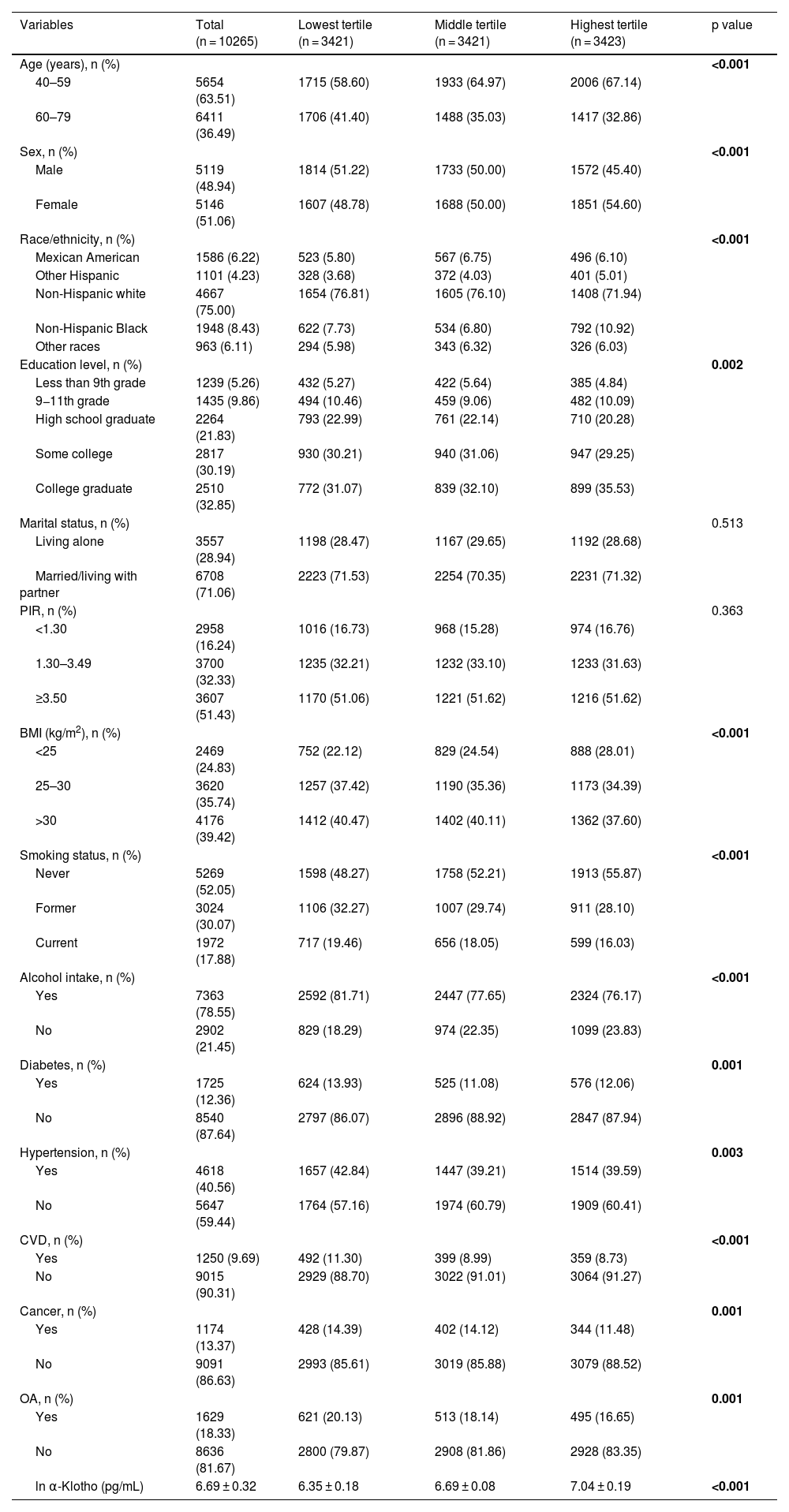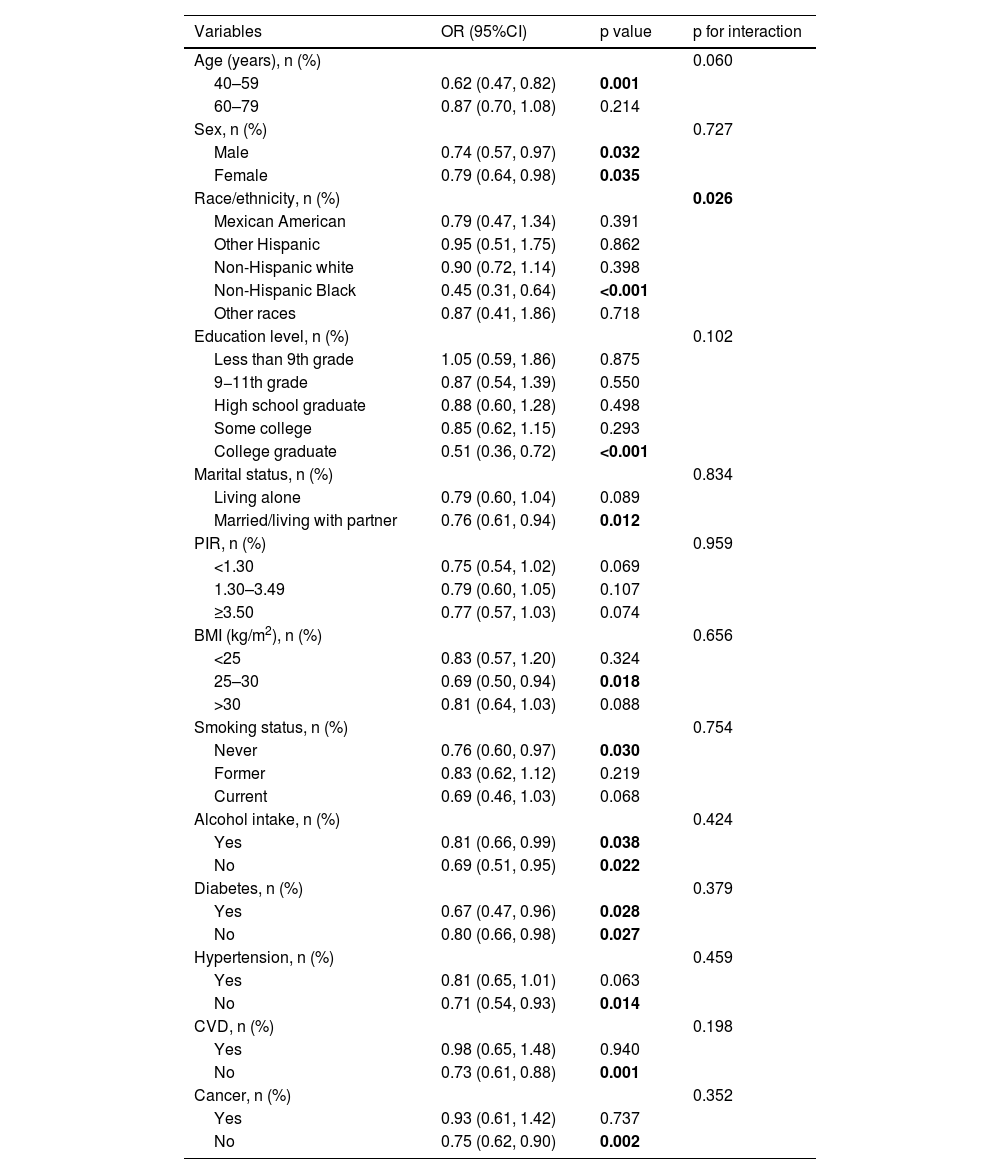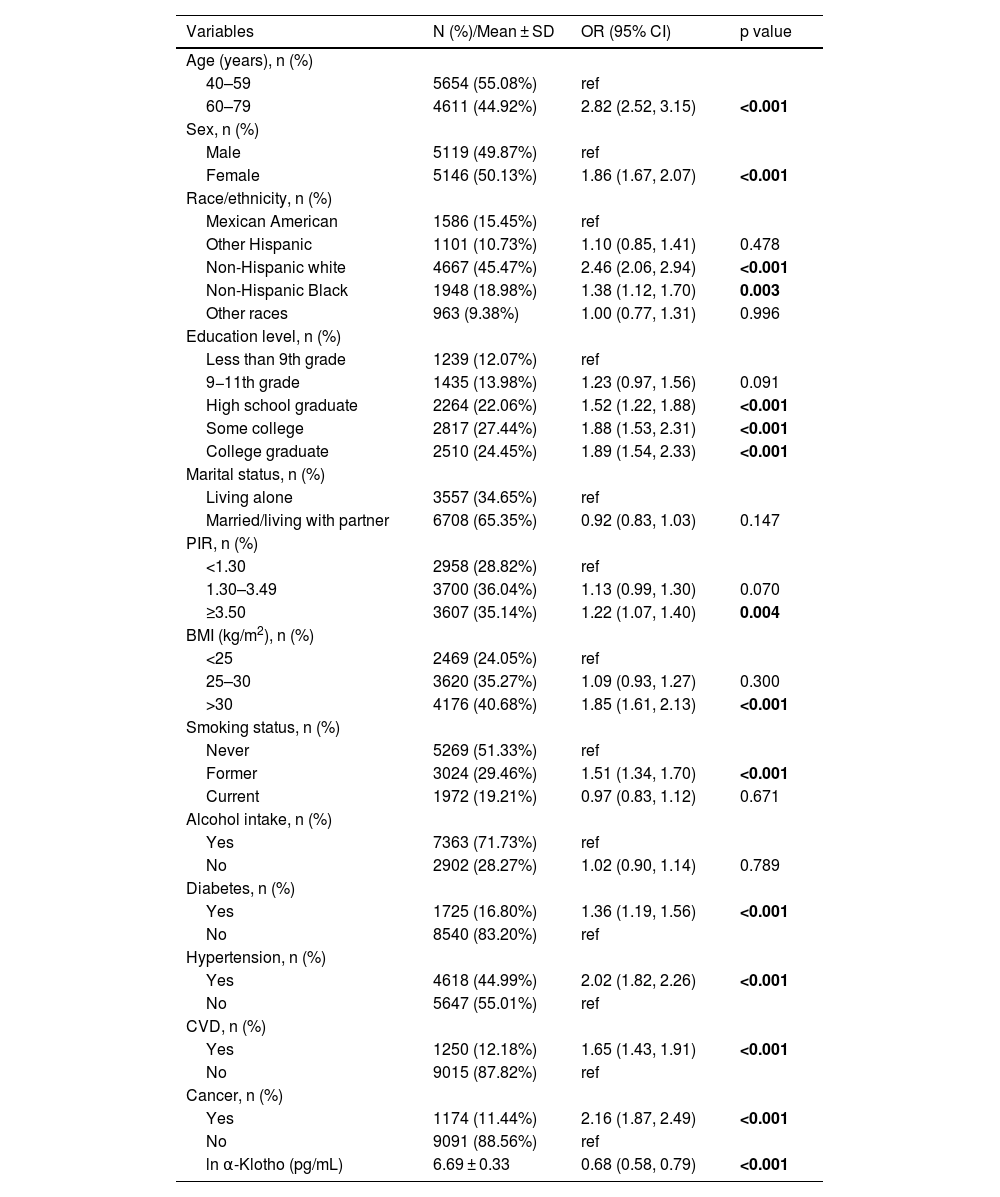As individuals age, the prevalence of osteoarthritis tends to increase gradually. α-Klotho is a hormone renowned for its anti-aging properties. However, the precise role of serum α-Klotho in osteoarthritis is still not fully comprehended.
MethodsWe conducted a cross-sectional study utilizing data from the National Health and Nutrition Examination Survey (NHANES) spanning from 2007 to 2016. Serum α-Klotho levels were measured using an enzyme-linked immunosorbent assay (ELISA). Osteoarthritis was assessed through self-reported questionnaires. Through univariate and multivariate logistic regression analyses, smooth curve fitting, threshold effect analysis, and subgroup analyses, we delved into the potential association between them.
ResultsThe study encompassed a cohort of 10,265 participants. In fully adjusted models of multivariate logistic regression analysis, we identified a negative correlation between serum ln α-Klotho and OA (OR = 0.77, 95% CI: 0.65−0.91, p = 0.003). When stratifying serum α-Klotho levels into tertiles, individuals in the highest tertile exhibited a 26% reduced risk of OA compared to those in the lowest tertile (OR = 0.84, 95% CI: 0.73−0.97, p = 0.014). Subsequent analyses indicated a linearly negative association. In subgroup analyses, we explored the relationship between serum ln α-Klotho and osteoarthritis across diverse populations, revealing the persistence of this association in the majority of subgroups.
ConclusionSerum α-Klotho levels exhibit a significant negative linear correlation with the prevalence of osteoarthritis in middle-aged and elderly populations in the United States.
A medida que las personas envejecen, la prevalencia de la osteoartritis tiende a aumentar gradualmente. α-Klotho es una hormona conocida por sus propiedades antienvejecimiento. Sin embargo, el papel exacto de la α-Klotho sérica en la osteoartritis aún no se comprende del todo.
MétodosLlevamos a cabo un estudio transversal utilizando datos de la Encuesta Nacional de Salud y Nutrición (NHANES) que abarca desde 2007 hasta 2016. Los niveles séricos de α-Klotho se midieron mediante un ensayo inmunoenzimático (ELISA). La osteoartritis se evaluó mediante cuestionarios autoinformados. Mediante análisis de regresión logística univariante y multivariante, ajuste suave de curvas, análisis de efecto umbral y análisis de subgrupos, se profundizó en la posible asociación entre ellos.
ResultadosEl estudio abarcó una cohorte de 10.265 participantes. En modelos totalmente ajustados de análisis de regresión logística multivariante, identificamos una correlación negativa entre ln α-Klotho sérica y OA (OR = 0,77; IC 95%: 0,65−0,91; p = 0,003). Al estratificar los niveles séricos de α-Klotho en terciles, los individuos en el tercil más alto presentaban un riesgo 26% menor de padecer OA en comparación con los del tercil más bajo (OR = 0,84; IC 95%: 0,73−0,97; p = 0,014). Los análisis posteriores indicaron una asociación linealmente negativa. En análisis de subgrupos, exploramos la relación entre ln α-Klotho sérico y osteoartritis en diversas poblaciones, revelando la persistencia de esta asociación en la mayoría de los subgrupos.
ConclusionesLos niveles séricos de α-Klotho muestran una correlación lineal negativa significativa con la prevalencia de osteoartritis en poblaciones de mediana y avanzada edad en Estados Unidos.
Article
Diríjase desde aquí a la web de la >>>FESEMI<<< e inicie sesión mediante el formulario que se encuentra en la barra superior, pulsando sobre el candado.

Una vez autentificado, en la misma web de FESEMI, en el menú superior, elija la opción deseada.

>>>FESEMI<<<












